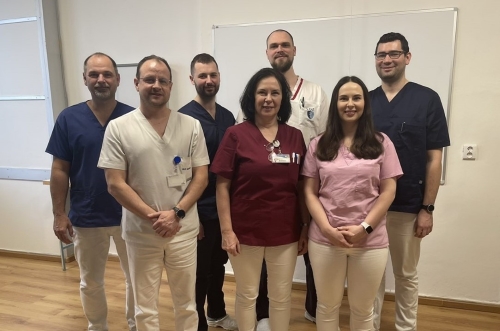Capture the Fracture Welcomes First FLS from Slovakia

In December 2023, CTF was delighted to welcome the Louis Pasteur University Hospital in Košice to the Capture the Fracture® Map of Best Practice. It is the first FLS from Slovakia to join the CTF Network. Prof. Dr. Marek Lacko, orthopedic surgeon and lead clinician of the FLS, provided Capture the Fracture® with responses to a short interview regarding
What inspired you to join the Capture the Fracture® Network?
Prof. Dr. M.L.: The prevalence of OP in the Slovak population is estimated at 6%, while only 30% of affected patients are treated with anti-osteoporotic drugs. Morbidity and mortality in patients with osteoporotic fractures are significantly higher than in the healthy population. The number of primary and secondary osteoporotic fractures is constantly increasing. The program Capture the Fracture can be the solution to this problem. It is a new standard of care for fragility fracture sufferers to prevent subsequent fractures through the implementation of coordinator-based, post-fracture models of care.
In what way do you hope Capture the Fracture® to be helpful for your FLS?
Prof. Dr. M.L.: Complex programs for the prevention of secondary fractures can help reduce the risk of subsequent fractures, can increase the quality of life of the risk population and can be cost-saving for the health-care system. We hope that the program Capture the Fracture can provide tools and recommendations to create a comprehensive center with the best care for patients with osteoporotic fractures.
What is the post-fracture care and FLS situation like in Slovakia from your perspective? What initiatives are taking place and what is needed?
Prof. Dr. M.L.: In Slovakia, we record the underdiagnosis of the population from the point of view of osteoporosis and the prevention of secondary osteoporotic fractures. Only a small part of patients after suffering an osteoporotic fracture is adequately osteologically diagnosed and treated. The reason is not only the lack of information about the problem among the target population, but also due to the absence of a coordinated systemic program for the secondary prevention of osteoporotic fractures.